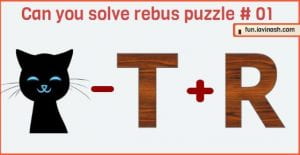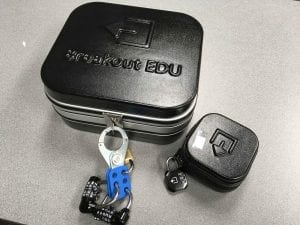 Today we will look at the logic that underlies the game “Pico, Fermi, Bagel”.
Today we will look at the logic that underlies the game “Pico, Fermi, Bagel”.
How to Play:
The game begins with one person secretly choosing a number with no repeated digits. We will start with a three digit number. Then others attempt to guess the number, and the one who chose the number responds to each guess as follows:
- If the guess has no numbers correct, they respond: “Bagel.”
- For each digit when the guess is correct but in the wrong place, respond: “Pico.”
- For each digit when the guess is correct and in the correct place, respond: “Fermi.”
- When all three digits are correct and in the correct place, respond: “CREAM CHEESE.”
We will play a few rounds of the game together, and then try to solve a couple problems related to the game.
Play this game at home with family or play online here – Pic, Fermi, Bagel
 A rebus is a puzzle device which combines the use of illustrated pictures with individual letters to depict words and/or phrases. Remember when you needed pictures to help your read a story – When Small is Tall. Now you need pictures to give you clues to solve puzzles.
A rebus is a puzzle device which combines the use of illustrated pictures with individual letters to depict words and/or phrases. Remember when you needed pictures to help your read a story – When Small is Tall. Now you need pictures to give you clues to solve puzzles.


 Swish is a spatial card game that challenges you to be the first to make matches, or “Swishes.” Swishes are made by stacking as few as two or as many as 12 cards so that every ball swishes into a hoop of the same color. The player with the most matches at the end of the game wins. Let’s have some ThinkFun!
Swish is a spatial card game that challenges you to be the first to make matches, or “Swishes.” Swishes are made by stacking as few as two or as many as 12 cards so that every ball swishes into a hoop of the same color. The player with the most matches at the end of the game wins. Let’s have some ThinkFun! You have been working diligently on breaking codes with numbers and colors. Now it is time for letters and symbols.
You have been working diligently on breaking codes with numbers and colors. Now it is time for letters and symbols. Pigpen – The Pigpen code is easier than it looks and is most students’ favorite. First, draw out the two grids below and fill in the letters. Find out more about this special coding here –
Pigpen – The Pigpen code is easier than it looks and is most students’ favorite. First, draw out the two grids below and fill in the letters. Find out more about this special coding here – 

 TEAMWORK: According to Dictionary.com, teamwork is the cooperative and coordinated effort on the part of a group of persons acting together as a team or in the interests of a common cause.
TEAMWORK: According to Dictionary.com, teamwork is the cooperative and coordinated effort on the part of a group of persons acting together as a team or in the interests of a common cause. Today we will look at the logic that underlies the game “Pico, Fermi, Bagel”.
Today we will look at the logic that underlies the game “Pico, Fermi, Bagel”.
You must be logged in to post a comment.